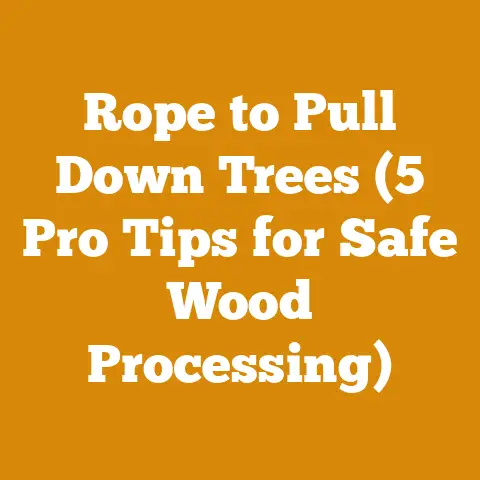How to Clean Stihl Chainsaw (7 Pro Tips for Peak Performance)
From Dull to Dazzling: How to Clean Your Stihl Chainsaw (7 Pro Tips for Peak Performance)
I’ve spent years felling trees, bucking logs, and wrestling with stubborn firewood. Through it all, my Stihl chainsaws have been my trusty companions. But just like any hardworking tool, they require regular maintenance to keep them running smoothly and safely. A clean chainsaw is a happy chainsaw, and a happy chainsaw means efficient work and a longer lifespan. In this guide, I’ll share my top seven pro tips for cleaning your Stihl chainsaw, ensuring it’s always ready to tackle the next job. Let’s get started!
Why Cleaning Your Stihl Chainsaw Matters
Think of your chainsaw as a high-performance engine. Sawdust, bar oil, and grime can accumulate, clogging vital components and hindering performance. This buildup can lead to several problems:
- Reduced Cutting Efficiency: A dirty chain and bar create more friction, making it harder to cut through wood and increasing fuel consumption.
- Overheating: Debris can block cooling fins, causing the engine to overheat and potentially damaging internal components.
- Premature Wear and Tear: Dirt and grime act as abrasives, accelerating wear on the chain, bar, sprocket, and engine.
- Starting Problems: A clogged air filter or spark plug can make your chainsaw difficult to start.
- Safety Hazards: A poorly maintained chainsaw is more likely to malfunction, increasing the risk of accidents.
Regular cleaning is crucial for preventing these issues and ensuring your Stihl chainsaw performs at its best. I’ve seen firsthand how a little preventative maintenance can save you time, money, and potential headaches down the road.
Essential Tools and Materials for Chainsaw Cleaning
Before you dive in, gather the necessary tools and materials. Having everything on hand will make the cleaning process smoother and more efficient. Here’s what I recommend:
- Stihl Multi-Tool or Screwdriver: For removing the bar and chain, and accessing various components.
- Chainsaw Cleaning Brush: A stiff-bristled brush designed for removing sawdust and debris from hard-to-reach areas.
- Air Compressor (Optional): For blowing out stubborn debris from the engine and air filter.
- Solvent or Degreaser: I prefer Stihl Resin Solvent, but citrus-based cleaners or kerosene can also work. Avoid harsh chemicals that could damage plastic components.
- Bar Oil: For lubricating the bar and chain after cleaning.
- Clean Rags or Shop Towels: For wiping down parts and absorbing excess cleaner.
- Gloves: To protect your hands from dirt, oil, and solvents.
- Eye Protection: Safety glasses or goggles to prevent debris from getting in your eyes.
- Work Bench or Stable Surface: A clean, well-lit area to work on.
Pro Tip 1: Safety First – Disconnect the Spark Plug
Before you start any cleaning or maintenance, always disconnect the spark plug. This prevents accidental starting, which can cause serious injury.
- Locate the spark plug boot (usually a rubber cap) near the engine.
- Gently pull the boot off the spark plug. Don’t pull on the wire itself.
- Tuck the boot away from the spark plug to ensure it doesn’t accidentally reconnect.
This simple step is crucial for your safety and should never be skipped. I’ve seen too many close calls to take this lightly.
Pro Tip 2: Remove the Bar and Chain
Removing the bar and chain allows you to thoroughly clean these critical components and access the sprocket and bar mounting area.
- Use the Stihl multi-tool or a screwdriver to loosen the bar nuts.
- Remove the side cover.
- Carefully lift the chain off the bar, noting its orientation.
- Remove the bar.
Important: Examine the chain for any signs of damage, such as broken teeth, loose rivets, or excessive wear. Replace the chain if necessary. I usually replace my chains after about 30-40 hours of use, depending on the type of wood I’m cutting.
Pro Tip 3: Clean the Bar and Chain
The bar and chain are exposed to the most dirt and grime, so they require careful cleaning.
Cleaning the Chain:
- Place the chain in a container with solvent or degreaser.
- Use a stiff-bristled brush to scrub away dirt and grime.
- Pay special attention to the drive links (the part of the chain that sits in the bar groove).
- Rinse the chain with clean water and dry it thoroughly.
Cleaning the Bar:
- Use a chainsaw bar groove cleaner or a thin screwdriver to remove debris from the bar groove.
- Clean the bar surface with a rag and solvent.
- Check the bar rails for wear and burrs. If necessary, use a bar dressing tool to smooth them out.
- Inspect the oil holes for blockages and clear them with a wire or small drill bit.
Insight: A well-maintained bar is essential for smooth cutting and chain longevity. I’ve found that regularly cleaning and dressing my bars significantly extends their lifespan.
Pro Tip 4: Clean the Sprocket and Bar Mounting Area
This area is often overlooked, but it’s crucial for proper chain lubrication and tensioning.
- Use a brush and solvent to remove sawdust and grime from the sprocket and bar mounting area.
- Inspect the sprocket for wear. Replace it if the teeth are worn or damaged.
- Clean the chain tensioning mechanism to ensure it operates smoothly.
- Check the oiler hole for blockages and clear it if necessary.
Tip: Apply a small amount of grease to the sprocket bearing to keep it lubricated. I use a marine-grade grease that resists water and dirt.
Pro Tip 5: Clean the Air Filter
A clogged air filter restricts airflow to the engine, reducing power and fuel efficiency.
- Locate the air filter housing (usually on top of the engine).
- Remove the air filter cover.
- Remove the air filter.
- Tap the filter gently to remove loose debris.
- If the filter is heavily soiled, wash it with warm soapy water.
- Rinse the filter thoroughly and allow it to dry completely before reinstalling.
- Inspect the filter for damage and replace it if necessary.
Recommendation: I clean my air filter after every 5-10 hours of use, depending on the conditions. A clean air filter makes a noticeable difference in engine performance. Some filters can be cleaned with compressed air. Always consult the manufacturer’s instructions.
Pro Tip 6: Clean the Cooling Fins and Cylinder Area
Overheating can cause serious engine damage. Keeping the cooling fins and cylinder area clean is essential for proper cooling.
- Use a brush and air compressor to remove sawdust and debris from the cooling fins.
- Pay special attention to the area around the cylinder head.
- Be careful not to damage the fins.
Caution: Never use water to clean the cooling fins, as this can cause rust and corrosion.
Pro Tip 7: Reassemble and Lubricate
Once all the components are clean, it’s time to reassemble the chainsaw and lubricate the bar and chain.
- Reinstall the bar, ensuring it’s properly seated on the mounting studs.
- Reinstall the chain, making sure it’s facing the correct direction. The cutting edges should point forward.
- Adjust the chain tension according to the manufacturer’s instructions. The chain should be snug but still able to be pulled around the bar by hand.
- Tighten the bar nuts.
- Fill the bar oil reservoir with fresh bar oil.
- Reconnect the spark plug boot.
Final Step: Start the chainsaw and check that the chain is properly lubricated. You should see a light spray of oil coming from the bar as the chain rotates.
Choosing the Right Cleaning Products
Selecting the appropriate cleaning agents is critical for maintaining the integrity of your Stihl chainsaw. Harsh chemicals can damage plastic and rubber components, leading to premature wear and failure. I’ve learned this the hard way, experimenting with various cleaners over the years.
- Stihl Resin Solvent: This is my go-to cleaner for removing pitch, sap, and stubborn grime. It’s specifically formulated for Stihl products and is safe for use on plastic and rubber.
- Citrus-Based Cleaners: These are a good alternative to harsh solvents. They’re effective at removing grease and grime and have a pleasant scent.
- Kerosene: Kerosene can be used to clean metal parts, but be careful not to get it on plastic or rubber.
- Avoid: Brake cleaner, carburetor cleaner, and other harsh solvents should be avoided, as they can damage plastic and rubber components.
Important: Always follow the manufacturer’s instructions when using any cleaning product.
Proper Chainsaw Storage After Cleaning
How you store your chainsaw after cleaning is just as important as the cleaning itself. Proper storage protects your chainsaw from the elements and prevents damage.
- Drain the Fuel Tank: If you’re not going to use the chainsaw for an extended period (e.g., over the winter), drain the fuel tank to prevent fuel from going stale and gumming up the carburetor.
- Empty the Bar Oil Reservoir: Empty the bar oil reservoir to prevent oil from leaking and attracting dirt.
- Store in a Dry Place: Store the chainsaw in a dry, well-ventilated place to prevent rust and corrosion.
- Use a Chainsaw Case: A chainsaw case protects the chainsaw from dust, dirt, and physical damage.
- Loosen the Chain Tension: Loosen the chain tension to prevent the chain from stretching during storage.
My Personal Touch: I always wrap my chainsaw in a clean cloth before storing it in its case. This provides an extra layer of protection against dust and scratches.
Troubleshooting Common Chainsaw Problems
Even with regular cleaning and maintenance, you may encounter problems with your Stihl chainsaw. Here are some common issues and how to troubleshoot them:
- Chainsaw Won’t Start: Check the fuel level, spark plug, air filter, and carburetor. Make sure the choke is in the correct position.
- Chainsaw Runs Poorly: Clean the air filter, spark plug, and carburetor. Check the fuel mixture.
- Chain Won’t Stay Sharp: Check the chain tension and bar lubrication. Sharpen the chain regularly.
- Chain Binds or Jams: Check the chain tension, bar lubrication, and bar groove. Make sure the chain is properly seated in the bar groove.
- Excessive Vibration: Check the chain tension, bar condition, and engine mounts.
Expert Advice: If you’re unable to diagnose or fix the problem yourself, take your chainsaw to a qualified service technician.
Maintaining Your Chainsaw for Longevity
Regular cleaning is just one aspect of chainsaw maintenance. Here are some other important steps to take to ensure your Stihl chainsaw lasts for years to come:
- Sharpen the Chain Regularly: A sharp chain cuts faster, safer, and more efficiently. I sharpen my chain every 2-3 tanks of fuel, depending on the type of wood I’m cutting.
- Check Chain Tension: Check the chain tension before each use and adjust as needed.
- Lubricate the Bar and Chain: Use a high-quality bar oil to lubricate the bar and chain.
- Inspect the Sprocket: Inspect the sprocket regularly for wear and replace it if necessary.
- Clean the Air Filter: Clean the air filter regularly to ensure proper airflow to the engine.
- Replace the Spark Plug: Replace the spark plug every year or after 100 hours of use.
- Service the Carburetor: Have the carburetor serviced by a qualified technician every few years.
- Use Fresh Fuel: Use fresh, high-quality fuel and mix it with the correct amount of oil. I always use Stihl’s pre-mixed fuel for convenience and reliability.
- Store Properly: Store the chainsaw in a dry, well-ventilated place to prevent rust and corrosion.
Key Takeaway: Consistent maintenance is the key to extending the life of your Stihl chainsaw. A little effort goes a long way.
The Impact of Wood Type on Chainsaw Maintenance
The type of wood you’re cutting significantly impacts the frequency and intensity of chainsaw maintenance. Hardwoods like oak and maple are more abrasive and require more frequent chain sharpening and bar maintenance than softwoods like pine and fir.
- Hardwoods: These woods dull chains faster and can generate more heat, requiring more frequent lubrication and cleaning.
- Softwoods: While easier on the chain, softwoods tend to produce more sap and resin, which can clog the bar and chain.
- Dirty Wood: Cutting dirty or sandy wood accelerates wear on the chain and bar.
My Observation: I’ve noticed a significant difference in chain wear when cutting seasoned versus green wood. Seasoned wood is generally less abrasive and easier on the chain.
Chainsaw Safety: A Constant Priority
No guide on chainsaw maintenance would be complete without emphasizing safety. Chainsaws are powerful tools that can cause serious injury if not used properly.
- Wear Protective Gear: Always wear safety glasses, hearing protection, gloves, and sturdy footwear.
- Use Proper Cutting Techniques: Learn and practice proper cutting techniques to avoid kickback and other hazards.
- Maintain a Safe Distance: Keep bystanders at a safe distance from the cutting area.
- Never Cut Above Your Head: Cutting above your head is dangerous and can lead to loss of control.
- Inspect the Work Area: Before cutting, inspect the work area for hazards such as rocks, roots, and overhead branches.
- Take Breaks: Chainsaw work can be physically demanding. Take frequent breaks to avoid fatigue.
- Never Use a Chainsaw When Tired or Under the Influence: Fatigue and impairment can significantly increase the risk of accidents.
Personal Story: I once witnessed a logger suffer a serious injury because he was rushing and didn’t take the time to properly assess the situation. Safety should always be your top priority.
Understanding Chainsaw Chain Sharpening
A sharp chain is essential for efficient and safe chainsaw operation. A dull chain requires more force to cut, which can lead to fatigue and increased risk of kickback.
- Signs of a Dull Chain: The chainsaw requires more force to cut, produces fine sawdust instead of chips, and pulls to one side.
- Sharpening Tools: You can sharpen your chainsaw chain with a file, a chain grinder, or a specialized sharpening tool.
- Sharpening Angle: The correct sharpening angle is crucial for maintaining the chain’s cutting efficiency. Consult your chainsaw’s manual for the recommended angle.
- Filing Technique: File each tooth evenly, maintaining the correct angle and depth.
- Professional Sharpening: If you’re not comfortable sharpening your own chain, take it to a professional sharpening service.
Tip: I use a chain grinder for quick and accurate sharpening. It’s a worthwhile investment if you use your chainsaw frequently.
The Future of Chainsaw Technology
Chainsaw technology is constantly evolving, with new innovations aimed at improving performance, safety, and ease of use.
- Battery-Powered Chainsaws: Battery-powered chainsaws are becoming increasingly popular due to their low noise, zero emissions, and ease of use.
- Electronic Fuel Injection: Electronic fuel injection (EFI) systems improve fuel efficiency and performance.
- Chain Brakes: Chain brakes are a standard safety feature that stops the chain instantly in the event of kickback.
- Anti-Vibration Systems: Anti-vibration systems reduce operator fatigue and improve comfort.
- Smart Chainsaws: Some manufacturers are developing “smart” chainsaws with features such as automatic chain tensioning and diagnostic capabilities.
My Prediction: Battery-powered chainsaws will continue to gain popularity as battery technology improves. They offer a compelling alternative to gas-powered chainsaws for many applications.
Conclusion: A Clean Chainsaw is a Productive Chainsaw
Cleaning your Stihl chainsaw is not just about aesthetics; it’s about maintaining performance, extending its lifespan, and ensuring your safety. By following these seven pro tips and incorporating them into your regular maintenance routine, you can keep your chainsaw running smoothly and efficiently for years to come. Remember, a little preventative maintenance can save you time, money, and potential headaches in the long run. So, take the time to clean your chainsaw, and it will reward you with years of reliable service. Now get out there and make some sawdust!






